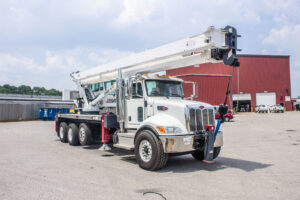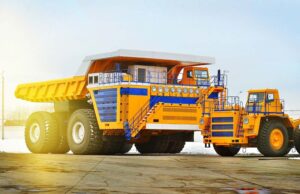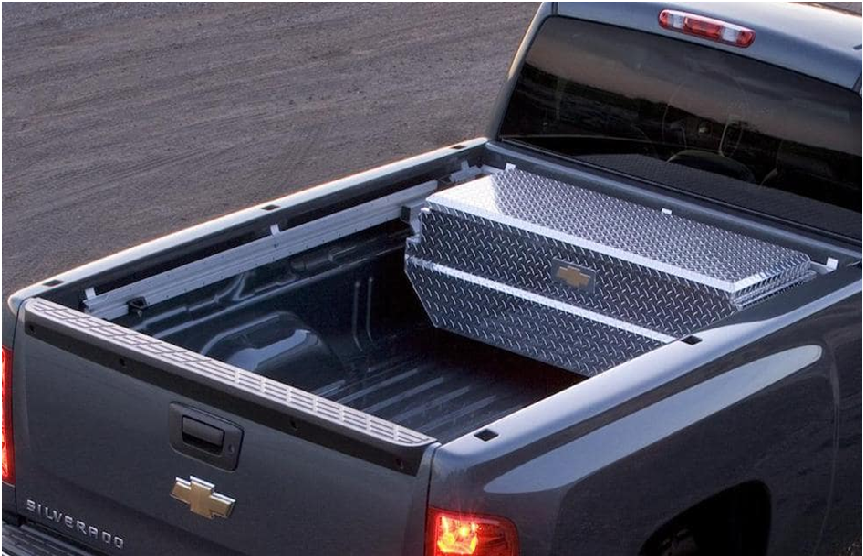Apart from the loading capacity of the truck (10, 15 or 20 tonnes crane), users of tipper crane trucks are generally not very interested in the key characteristics of the trucks they use.
Yet it is important because they can make a real difference.
We will retain here 5 key characteristics that should be kept in mind: the length of the crane, its lifting capacity, the presence of a remote control, the orientation of the crutches and the vehicle equipment.
1. The length of the crane:
The configuration of construction sites, particularly in towns, makes it less and less possible to bring the truck closer to the work to be done. It is forbidden to ride on the sidewalks, which are getting wider and wider, with cycle paths, bollards, etc.
It is therefore important to be able to work away from the truck with the crane.
The length of a crane is generally referred to as the number of extensions. The correspondence varies a little according to the brands but roughly:
The longer the crane, the more practical it is, but the length has several disadvantages:
The longer the crane, the greater the swing at the end of the crane, increasing the risk of accidents
The longer a crane is, the less it can lift at the end of the jib because the weight of the extensions reduces the lifting capacity of the crane.
For example, a PK 19001 crane can lift 1600 kg at 10m30 when it has only 3 extensions but only 1500 kg when it has 4. This is linked to the weight of the additional extension.
Gas truck features Finally, the longer the crane, the faster it wears out, resulting in high maintenance costs.
For public works sites in town, particularly in Ile de France, the ideal is 3 extensions. 4 extensions are necessary for very specific applications: lighting columns, etc. 2 extensions are often sufficient.
2. The power of the crane, its lifting capacity
This is of course an important element. The lifting capacity of a crane is expressed in tonne.meter, more commonly noted tm It is therefore a torque. For example a crane of 10t.m. Means that theoretically, it can lift 10 tons at 1 meter (10×1=10) or 5t at 2m (5×2=10) or 2 t at 5m (2×5 =10) or 1t at 10m (1× 10=10). This remains theoretical because it depends on the weight of the crane itself, its position, …
This 19t.m. 3 extensions can lift 1,600 tonnes at 10m30, i.e. a clamshell loaded with 1t200, for example of sand, gravel or concrete (1t600 – 400 kg = 1t200).
Obviously, the longer a crane is, the more lifting capacity it must have. For example, a crane with 3 10tm extensions fitted with a clamshell could only lift around 500kg of sand at the end of the jib (900kg at 10m20-400kg of clamshell), which is too low.
For public works sites, the ideal length for a crane with 3 extensions is between 14 and 18 tm. Sometimes more is needed in specific applications. A crane with 2 extensions can make do with 10 to 12 tm.
3. Remote control crane or not
Initially the cranes could only be operated from the catwalk, on the driver’s side, with the hydraulic levers.
This system worked very well but it had several drawbacks:
Very difficult to work next to the passenger side truck. Yet this is where the work is most often done.
Impossible to get closer to the work area when there is specific work to be done.
majority of cranes are now equipped with remote controls. They allow the operator to position himself in the best place according to the specific conditions of the site. The work is still very often done from the bridge to have a general view of the site and to see the interior of the tipper, but there is total freedom.
The use of remote control cranes is a key element of safety.
4. Orientation of crutches
This point may seem technical and detailed, but it is not. To work safely and with maximum power, the operator must place the crane legs on the ground.
Ideally, the crutches should be oriented downwards to facilitate their handling (see photos below). That said, when the body of the truck, it is sometimes difficult to keep the crutches down because the chassis of the truck is already full: fuel tank, batteries, exhaust, air bottles, ….
Some trucks are therefore built with the stands up. The operator must therefore each time rotate the crutches on their own before lowering them and vice versa when setting off again.
This operation presents a certain danger but is above all tedious. In town it is sometimes necessary to repeat it 15 to 20 times during the day. After a while the temptation is great for the operator to work without a stand by disabling the safety devices, which is easily done.
5. Additional safety equipment
Independently of the truck itself and its crane, it is important for the safety of the operator and the site that an effort is made in terms of equipment.
We will list here some examples that seem important to us:
Reversing camera
Visible beacons
Cocottes to secure the surroundings of the truck
Pads to increase the support surface of the stands on the ground in order to limit marks on the ground
Anti-pollution kits in the event of a hydraulic leak
Straps and chains checked



